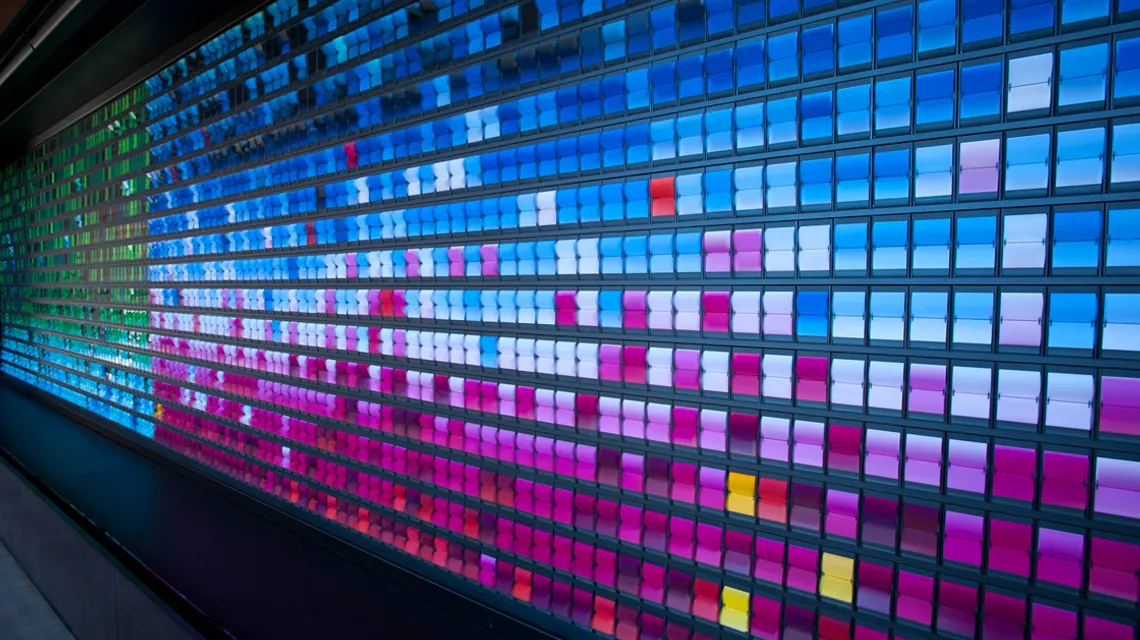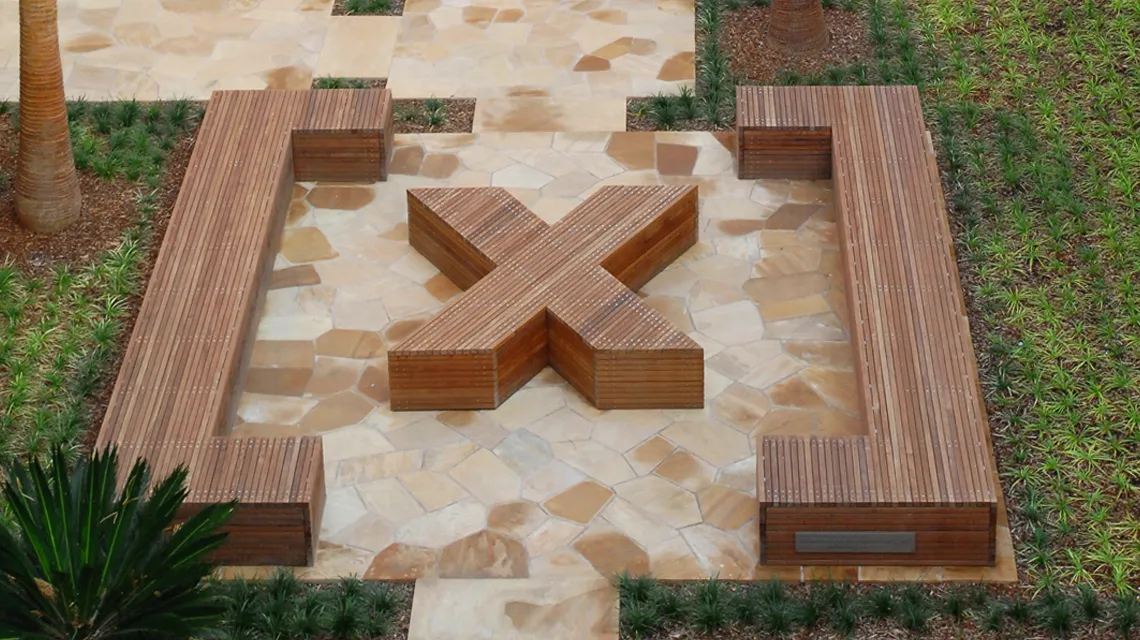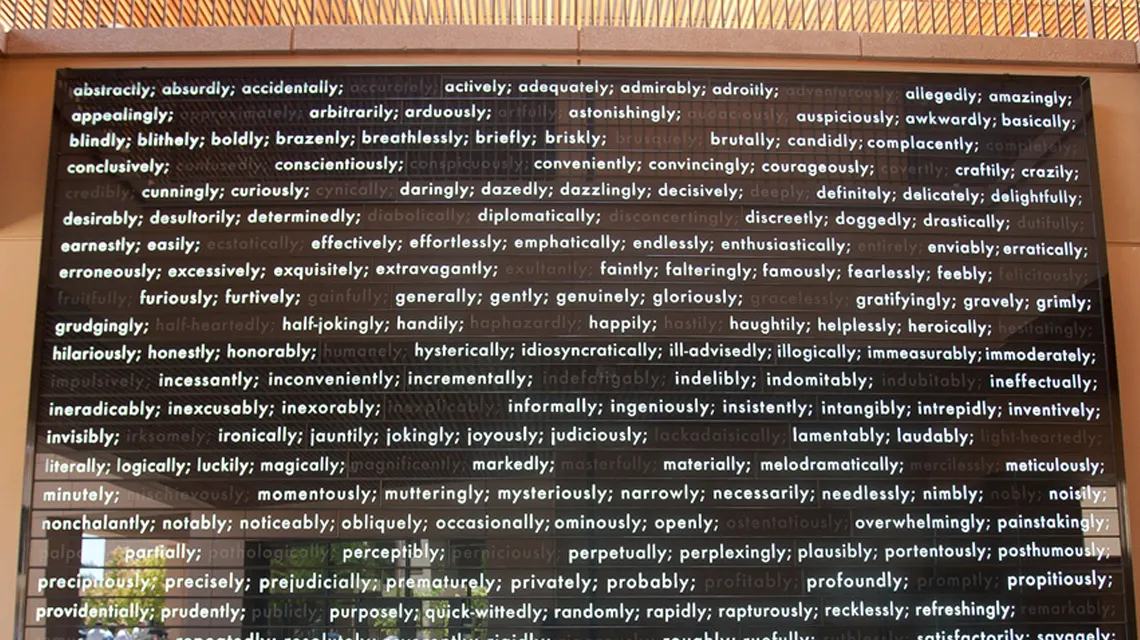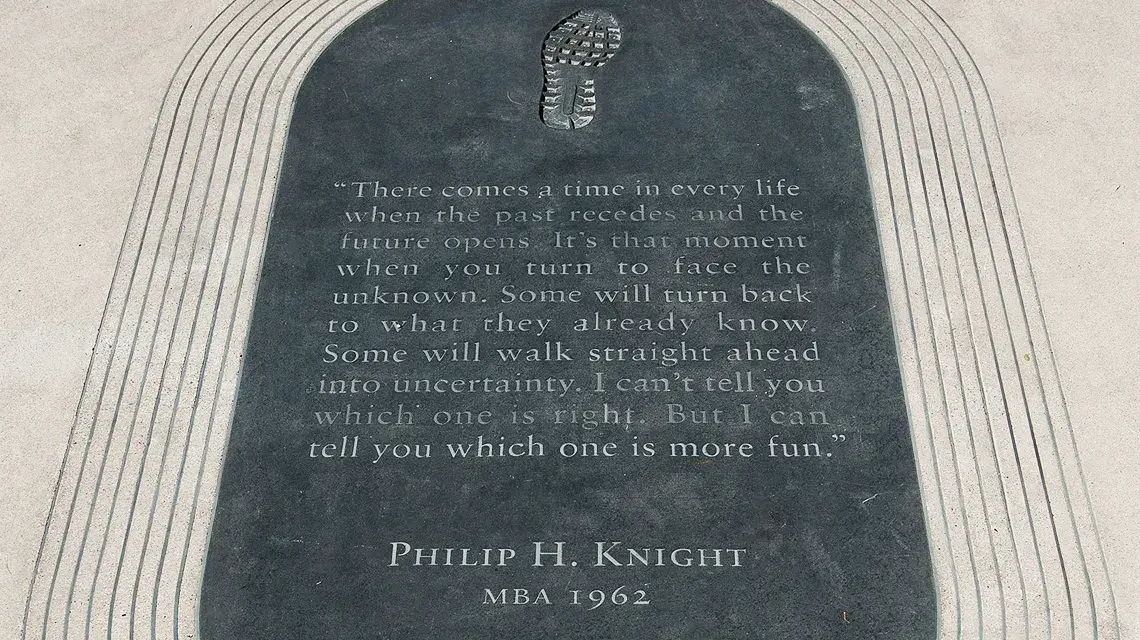On a spring night, a lone runner padded through Stanford’s newly built Knight Management Center. Suddenly he stopped in his tracks, transfixed by a brilliantly colored piece of art on the side of Zambrano Hall.
The work, Monument to Change as It Changes, looks like a massive wall of paint chips come to life. In fact it’s a computer-controlled array of 2,048 “flip digit” modules like those on departure and arrival boards at European train stations, but with colored cards instead of letters and numbers. As the cards flip around within each module, they create a pleasant fluttering sound and a mesmerizing, ever-evolving set of patterns and images.
Looking on quietly, Peter Wegner was delighted by the jogger’s reaction. “He stayed for 18 minutes; I checked my watch,” the Berkeley-based artist recalls. “I thought, ‘If I can take a runner to a dead stop at 10 at night and hold him there for that length of time, I’m really onto something.’”
Reared in South Dakota and educated in fine arts at Yale, Wegner already had pieces hanging at the Getty Center in Los Angeles, and in New York’s Guggenheim and Museum of Modern Art. To prepare for this job, he talked at length with Stanford students, faculty, and staff, as well as representatives from the Nike Foundation. He even sat in on some GSB classes.
In the end he created five new pieces for the cutting-edge campus. Together they tell a story about where Stanford Graduate School of Business is headed, rather than where it has been. As he explains, “I don’t do [traditional commemorative] work and I’m not particularly compelled by it myself as an artist or as a viewer. I’m more interested in change and the future.”
Weighing in at 3 tons, Monument to Change was a challenge to engineer, fabricate, and install. Working on “multiple laptops on multiple continents,” Wegner painstakingly designed every color pattern so that nothing repeats within an 8-hour cycle. The final product, manufactured by a Swiss company, was so heavy that engineers had to recalculate the loads on the wall where it was to hang. “We ended up adding steel to the wall to reinforce it,” says Knight Management Center program director Kathleen Kavanaugh. Fortunately, she adds, “it’s all we hoped it would be. … From the tiniest child to the oldest person, people are fascinated by it.”
A second Wegner piece, Ways to Change, hangs near the TA Associates Café. It consists of 300 glossy black panels lit from behind with LEDs. Each panel is printed with an adverb that can be used to modify the verb “change”: intangibly, profitably, fearlessly, brutally, satisfactorily, and so on. Sometimes the board lights up with groups of synonyms or antonyms; other times it blinks in arresting visual patterns. One group of undergrads, reportedly making a game out of it, shouted out definitions of the words as they lit.
Nike Foundation President and CEO Maria Eitel, SEP ‘01, who played a key role in planning the new campus, couldn’t be more pleased by the response. “I admit I was a skeptic,” she says, particularly regarding the Monument to Change. “But when I saw the wall and experienced it, I had just the opposite reaction. When I look at his art I’m struck by how it really tells a story. It’s beautiful, it’s provocative, and it causes you to pause and think big thoughts.” Nike Inc. co-founder and chairman Phil Knight, MBA ‘62, shares his opinion. “On seeing the results,” he says, “I am delighted.”
Other Wegner pieces created for the Knight Management Center include a cornerstone “dedicated to the things that haven’t happened yet and the people who are about to dream them up”; Monuments to the Unknown Variables, a set of benches shaped like academic equation components [x] and [y]; and Monument to Your Future Collaborators, a collection of footprints near the Bass Center that were inspired by Knight’s own distinctive waffle footprints and quotation at the school entrance. (That gateway piece was designed by Steve Sandstrom of Sandstrom Partners Inc., a Portland, Ore., design and advertising firm.)
By popular demand, the southwest entrance also will feature one piece of art from the old campus: François Stahly’s 1961 bronze Les Oiseaux Flammes, “The Flame Birds.”
— Theresa Johnston




